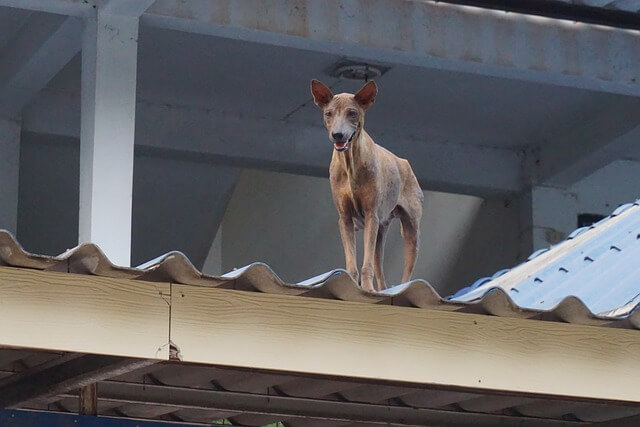The Ultimate Guide to Understanding Dog Behavior: From Aggression to Hyperactivity
By IAN
Dogs are known to be man’s best friend, and for a good reason. They are loyal, affectionate, and have been bred for thousands of years to work alongside humans. But like humans, each dog has its unique personality, and understanding dog behavior can help us build a better relationship with them.
Types of Dog Behavior
Aggression
Aggression in dogs is a behavior that can be concerning for dog owners. It can manifest in various ways, such as growling, biting, or snapping. It’s essential to understand that aggression is not always a sign of a vicious dog but can be a result of fear, anxiety, or territorial behavior. For instance, a dog may become aggressive when they feel their space is being invaded by a stranger.

One way to prevent aggression is by socializing your dog from an early age. Introducing your dog to new people, animals, and environments can help them become more comfortable in various situations, and reduce the likelihood of them feeling threatened. Positive reinforcement training can also help to reduce aggressive behavior by teaching your dog alternative ways to communicate, such as through commands or signals.
Also Read Ways to Choose Guard Dogs For Home Security
Separation Anxiety
Separation anxiety is a behavior that occurs when a dog becomes overly attached to its owner and becomes anxious when left alone. It can manifest in various ways, such as excessive barking, destructive behavior, or attempts to escape. Separation anxiety can be stressful for both the dog and its owner.

One way to prevent separation anxiety is by gradually desensitizing your dog to being alone. Start by leaving your dog alone for short periods, and gradually increase the duration over time. Providing toys and treats can also help keep your dog occupied and distracted while you’re away.
Barking
Barking is a natural behavior for dogs, but excessive barking can be a problem for dog owners. It can be a sign of boredom, anxiety, or territorial behavior. Understanding the root cause of barking can help in finding solutions to the problem.

One way to reduce excessive barking is by providing your dog with enough exercise and mental stimulation. A tired dog is less likely to bark excessively. Positive reinforcement training can also help to reduce barking by teaching your dog alternative ways to communicate, such as through commands or signals.
Chewing
Chewing is a natural behavior for dogs, and it’s essential to provide them with appropriate items to chew on to prevent destructive behavior. However, excessive chewing can be a sign of anxiety or boredom.

One way to prevent destructive chewing is by providing your dog with appropriate chew toys and bones. You can also redirect your dog’s chewing behavior to appropriate items by offering them a toy when you see them attempting to chew on something they shouldn’t.
Check out dog toys for aggressive Chewers
Fear
Fearful behavior is a common problem for dogs and can manifest in various ways, such as hiding, shaking, or cowering. Fearful behavior can be a result of a traumatic experience, lack of socialization, or genetics.

One way to prevent fearful behavior is by socializing your dog from an early age. Introducing your dog to new people, animals, and environments can help them become more comfortable in various situations. Positive reinforcement training can also help to reduce fearful behavior by teaching your dog alternative ways to respond to scary situations.
Hyperactivity
Hyperactivity is a behavior that can be challenging for dog owners, and it can manifest in various ways, such as jumping, pacing, or excessive barking. Hyperactivity can be a result of lack of exercise, boredom, or genetics.

One way to prevent hyperactivity is by providing your dog with enough exercise and mental stimulation. A tired dog is less likely to engage in hyperactive behavior. Positive reinforcement training can also help to reduce hyperactivity by teaching your dog alternative ways.
Check out 8 Reasons Why Adopting a Senior Dog or Cat is a Great Idea
Dog Breeds with Most Aggression
It’s important to note that aggression in dogs is not breed-specific and can manifest in any type of dog. However, certain breeds may have a predisposition towards aggression due to their breeding history or temperament. It’s essential to remember that aggressive behavior in dogs is not solely determined by breed but also by factors such as socialization, training, and environment.
Some breeds are known to have a higher likelihood of displaying aggressive behavior, including:
- Pit Bulls
- Rottweilers
- German Shepherds
- Doberman Pinschers
- Chow Chows
- Akitas
- Boxers
- Bulldogs
- Siberian Huskies
- Great Danes
However, it’s important to remember that not all dogs of these breeds will exhibit aggressive behavior, and not all aggressive dogs will belong to these breeds. It’s crucial to socialize and train dogs of all breeds to reduce the likelihood of aggressive behavior.
Controlling dog’s aggressive behavior
Dealing with aggressive dog behavior can be challenging and requires patience, consistency, and sometimes professional help. Here are some steps you can take to help control aggressive dog behavior:
- Identify the triggers: Pay attention to what triggers your dog’s aggressive behavior. Is it certain people, situations, or objects? Once you identify the triggers, you can start to avoid them or work on desensitizing your dog to them.
- Seek professional help: If your dog’s aggressive behavior is severe, it’s important to seek help from a professional dog trainer or behaviorist. They can assess your dog’s behavior and develop a training plan tailored to your dog’s specific needs.
- Practice obedience training: Teaching your dog basic obedience commands such as “sit,” “stay,” and “come” can help establish you as the pack leader and increase your dog’s trust and respect for you.
- Use positive reinforcement: Reward your dog for good behavior and ignore or redirect them when they display aggressive behavior. Positive reinforcement training can help your dog learn to associate good behavior with rewards.
- Keep your dog socialized: Proper socialization can help prevent aggressive behavior in dogs. Introduce your dog to other dogs, people, and new environments in a controlled and positive manner.
- Manage your dog’s environment: If your dog’s aggressive behavior is triggered by certain situations, avoid those situations or manage your dog’s environment to reduce the triggers.
- Be patient and consistent: Dealing with aggressive dog behavior can be a long and challenging process. It’s important to be patient and consistent with your training and seek professional help when needed.
Remember, aggressive dog behavior can be dangerous, so it’s important to prioritize safety and seek professional help if needed.
Additionally, it’s important to seek the help of a professional trainer or behaviorist if your dog displays aggressive behavior.
Some references of dog professional trainers or behaviorists in the USA
- Cesar Millan – A world-renowned dog behaviorist known for his television show “The Dog Whisperer,” Cesar Millan has a number of training centers throughout the US. His website, cesarsway.com, also provides resources and information for dog owners.
- Karen Pryor – Karen Pryor is a behavioral biologist and author who has developed a positive reinforcement training method called “clicker training.” Her website, clickertraining.com, has resources for dog owners as well as information about her training seminars.
- Ian Dunbar – Ian Dunbar is a veterinarian, animal behaviorist, and dog trainer who has written several books on dog behavior and training. His website, duncanpress.com, has information on his training programs and workshops.
- Victoria Stilwell – Victoria Stilwell is a dog trainer and behaviorist known for her television show “It’s Me or the Dog.” Her website, positively.com, has resources for dog owners and information about her training seminars.
- Patricia McConnell – Patricia McConnell is a certified applied animal behaviorist and author of several books on dog behavior and training. Her website, patriciamcconnell.com, has resources for dog owners and information about her training seminars.
Conclusion
Understanding and managing dog behavior is a key aspect of being a responsible dog owner. Every dog is unique and has their own personality, habits, and triggers that affect their behavior.
By learning about their body language, identifying triggers, providing positive reinforcement, and seeking professional help when needed, dog owners can help their furry companions develop good behavior and prevent or manage problem behavior. With patience, consistency, and love, dogs can become well-behaved and happy members of our families and communities.
Disclaimer: This article may contain affiliate links to products. All product details reflect the price and availability at the time of publication. We may receive a commission for purchases made through these links.



